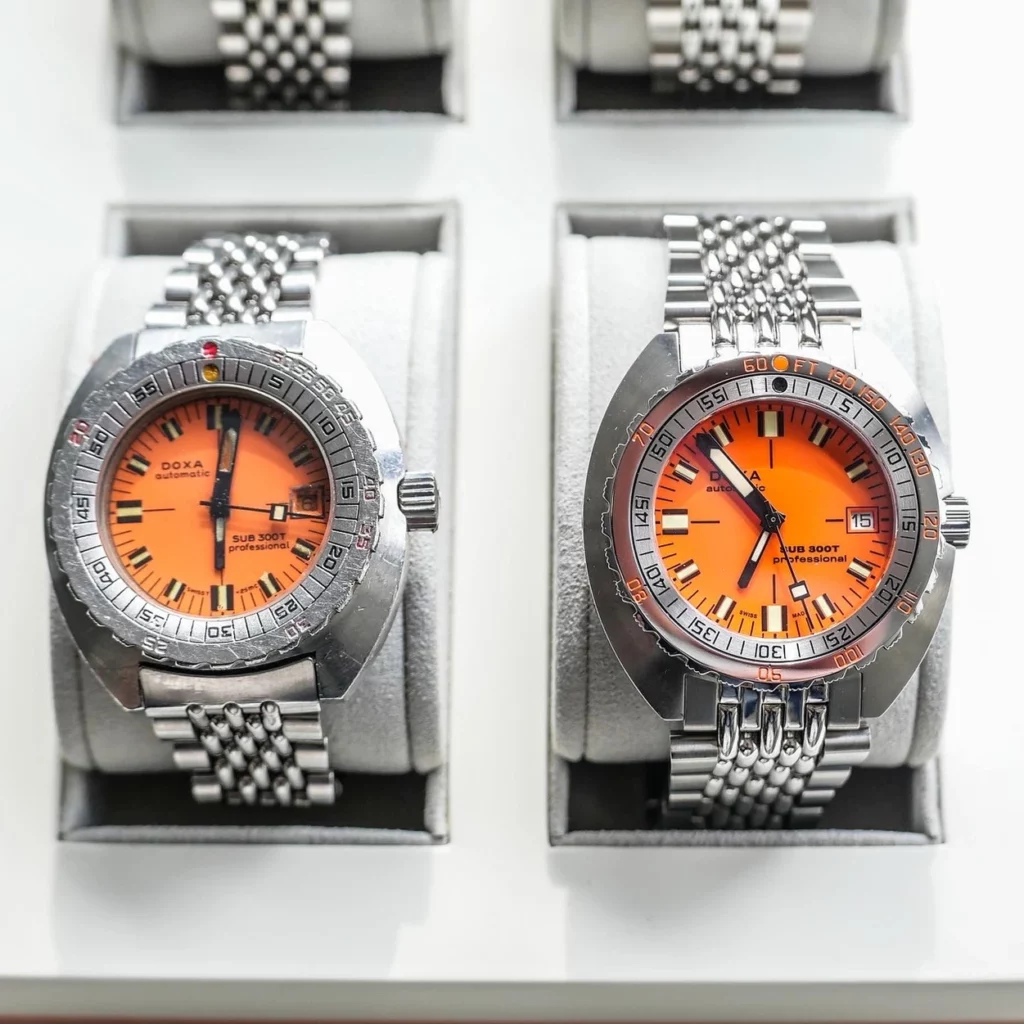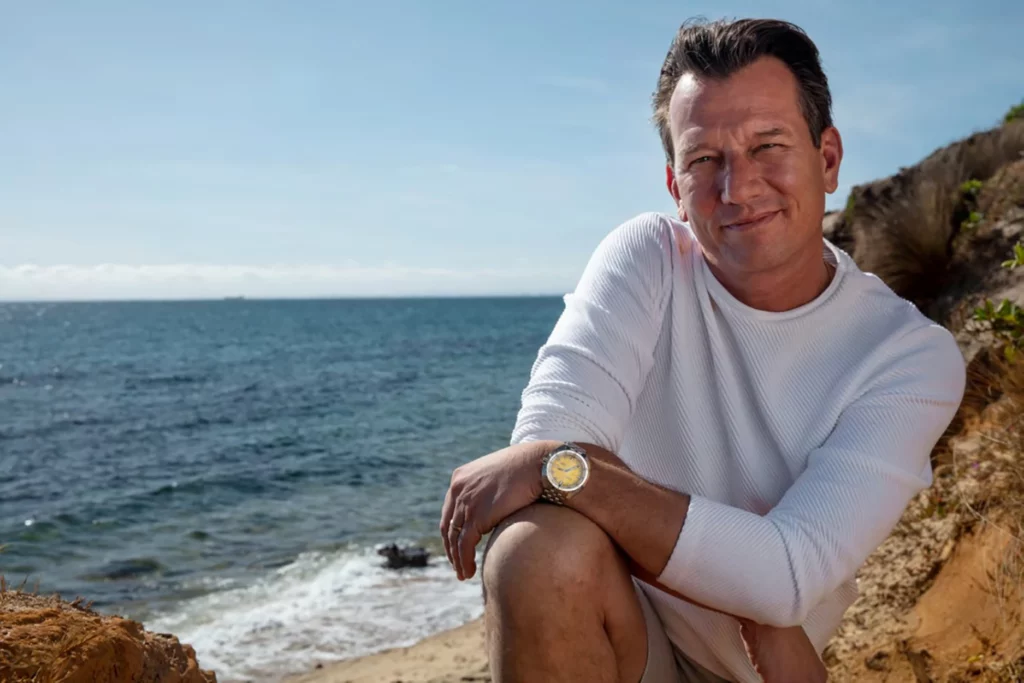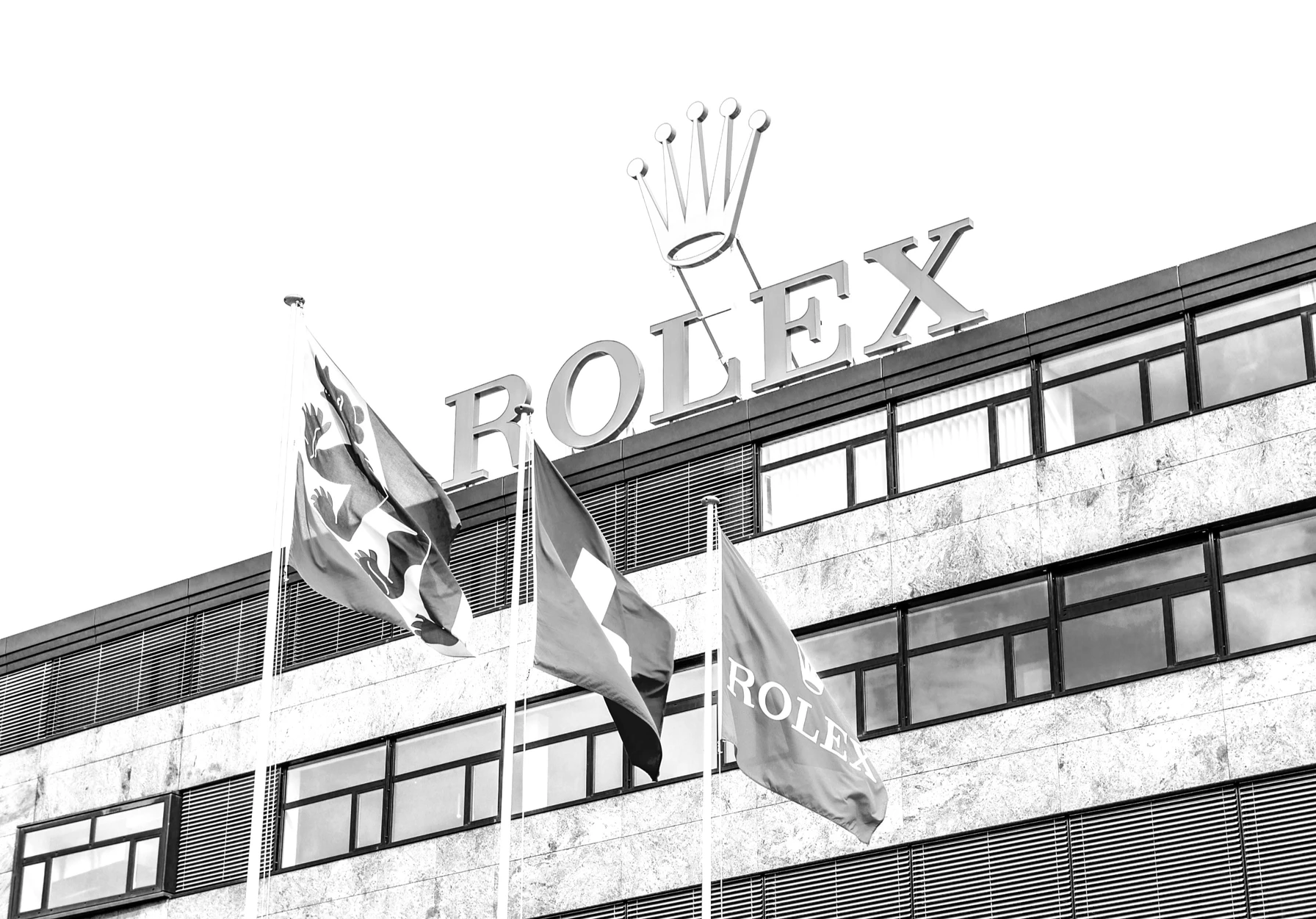
Meeting and interviewing Jan Edöcs, CEO of Doxa Watches, was special in two ways. First, he heads a brand that is among the true legends of watchmaking, one of the absolute references in the world of dive watches. But also, Mr Edöcs was born and raised in Bienne, where Doxa is based. He shares a unique perspective about what it was like growing up in the watchmaking town, and becoming one of its leading figures today.
On a sunny Thursday afternoon, we met at Doxa’s headquarters in the Boujean area, a few meters away from Rolex. Around a table on which were displayed watches from the current collection but also vintage icons from the late 1960s, we talked about what makes Doxa, and Bienne, so unique.
You are yourself from Bienne, and previously worked for other Bienne brands such as Omega, Swatch and Milus. What does this city mean to you? What role do you believe Bienne has played, and continues to play, in the history of watchmaking?
Bienne is one of the cradles of Swiss watchmaking. Two centuries ago, farmers in the Jura hills turned into watchmakers in the winter, when there was snow, no electricity, no traveling. They produced their own movements, and, in the springtime, they tried to sell them. Then some brands, who saw the value in the savoir-faire, placed orders for the following winter. Bienne became, and has remained, the cradle of Swiss watch production.
Having grown up in Bienne, to me, the watch industry meant internationality. Learning in school French, German, then English. In what industry can you use your languages? When I grew up as a kid, you would see the Rolex logo, the Omega logo… It represented the world. The international world of Bienne. That’s where I wanted to go.
In our environment, friends, family, so many people worked in the industry. Still today, if you go to a restaurant, don’t talk about your watch business because the next table can also be people in the industry
The aspiration for the watch industry was not just the concept but also the product. It’s not like other industries, such as banking, where the output is abstract. Here, you have something you can touch and feel. And this passion, this ambition, is shared with so many others around you.
2022 marks the 25th anniversary of Doxa’s presence in Bienne. Can you tell us about how the transfer from Le Locle came into play, and why Bienne was chosen to host the brand’s new headquarters?
In 1997, the Jenny family bought the brand. There are two companies within the group. Walca, which is 46 years old, is one of the main private label producers in the industry. Like a private bank, we don’t disclose who we work for on that side of the business. Walca was in Bienne, so it made sense to optimize for synergies between the two, which is why we moved Doxa over here.

This year also marks the 55th anniversary of the SUB 300T. What does this legendary timepiece continue to mean for Doxa today?
It’s the source. The legitimacy. Back then, the watch absolutely needed to be extremely reliable as a diving tool. Today, people use dive computers. The history around the SUB 300T is incredibly rich: Jean-Jacques Cousteau, the helium valve….
Nowadays, with social media, you can create a history in two days; it doesn’t mean it’s true. With Doxa, it’s the opposite. We have so much. In 1964, Doxa technicians started testing colors. Today, orange is part of the Doxa DNA. Many other brands have picked it up since. But back then, all dive watch dials were blue or black. Our teams went into the lake of Neuchâtel in 1964 and realized orange was the most visible color. Of course, when you go 100m down, color doesn’t matter anymore. But during the first 30 meters, it makes a difference.
We must remember that when Cousteau started his explorations in the 1950s, the ocean was as much a mystery as the Moon. There was a small circle of people involved in exploration, and a small group of people developing the watches they needed. It was really a small community at the time, a true adventure.
The Doxa SUB 300T Conquistador was the first watch with a helium valve presented to end consumers. Another brand back then was also involved in the production of helium valve watches, but it was to serve diving institutions, not yet the general public.
Doxa has since developed other products of course, but always remained in this niche sector of dive watches. This is all great, but as it started over 50 years ago, there was a risk for us of becoming a museum brand, a brand where everyone congratulates you but no one buys your watches.
That’s why 2 years ago we started an effort to find new end consumers, to pass on our message to the next generation. Of course, in my generation, we all know Jean-Jacques Cousteau. But try to tell a 20 year old today about Cousteau, he will ask you: “is he a new PSG player?”.
This is where the SUB 200 comes into play, offering a lot of watch for a very good price.It’s for people who want to be sporty, who want something with legitimacy, but don’t need a true driver. It’s 990 CHF retail. Our positioning starts here, up to 5,000 CHF. At 5,000 we stop. Most of our competitors start at 5,000. Doxa today is very easy to understand.
You mentioned the helium escape valve. Let’s zoom in on that for a bit. Today, the HEV, while of very limited practical use to the vast majority of divers, remains a key feature in many of the most popular dive watches on the market. Why do you think this is?
It’s part of the history. We have watches resistant to 1,500m. Who goes down 1,500m ? But it’s part of the heritage, and it has a functionality, technically. Like the chronograph. Most people who have one on their watch don’t use it.
There’s also this deeper, more subtle notion of retro: if you did it over 50 years ago, and it’s still working, then it can’t be bad.
Technically, in saturation diving, there was always a risk that small parts of helium would enter the watch and blow up the glass. So it’s not just a gadget. And today, anyone who wants to use it has that extra security. Sure, it’s just for extreme divers. But there are some. And the technology was developed by Doxa, so more than anyone, we have the legitimacy to offer it still today.

Doxa is known for having a very loyal and passionate fanbase. How did this originally come into being? How is it perpetuated today? In which key markets?
Our fanbase was first and foremost in the English speaking world: US, UK and Australia. It started through our distribution there in the past. But it’s also about where there is ocean around…
Fast forward a few decades, Doxa was one of the first brands to go online. Most brands today sell 10-15% through their online channel. We sell 65%… We have direct contact with our consumers. Margin wise, we don’t just feed retail. We developed expertise in online customer and community management.. Not just what you see, but also what’s happening in the background.
We know our consumer, their profile. And to be clear, it’s not just because they like water, or diving. It can be completely other reasons.
You mentioned this already: one thing that is striking about Doxa is the very focused and consistent nature of its core collection. 7 different collections in total, all dive watches, with rich old historical routed color variations available. What is the philosophy behind this approach?
It’s very simple: Doxa stays in the water. We don’t try to please the pilots, we don’t try to please the car industry. I can’t talk for other brands but our key principle is: don’t try to please everyone. Whether you like it or you don’t like it, Doxa stays in the water.
Another key thing is: everything we do has to have a logic. An example: today, a highly popular color is aquamarine (Editor’s note: i.e. so-called “Tiffany blue”). We did this 50 years ago. We also have other bright colors. But we do it for a reason: such colors are in their natural environment on beaches, when the sun is shining. It has to do with enjoyment, with the statement. Doxa is not a classic dress watch.
Back to Bienne… With your headquarters here, do you have plans to offer a local experience to your fanbase? For instance, a boutique, or a museum, as other Bienne brands have recently launched?
The boutique is not on the roadmap. But we like to welcome visitors here, at our headquarters, where we also have our ateliers and a growing small museum. Everything takes place here, over 3 floors.
We have museum pieces, original pieces of 1969, and fans can reach out to us, come here, touch and feel those historical watches. They can contact us via our website or social media.
Doxa is family owned, and this gives the brand a different feel. Visitors sense that when they come to see us. It’s direct, it’s warm and it’s open minded.
They can see how the watches are made, tested for depth, one by one…
Finally, if you had to choose one fact, or one anecdote, from Doxa’s rich history, to best represent the brand, what would it be? Why?
First, I love our founding date, 1889. The same as the Eiffel Tower.
But beyond that, it’s really the very late 1960s, when diving became more popular and Doxa took part in this global adventure. And that means the SUB 300T. It’s the core product of our brand. It’s the helium valve. Now today, we have the 300 with carbon, blending the past and the future. At 87 grams, it’s a really high-tech watch.
Our future will be about continuing to innovate while paying tribute to the past.




A very insightful and pleasant read
Great read. Great clarity and vision by the CEO.
Great article. I love the brand